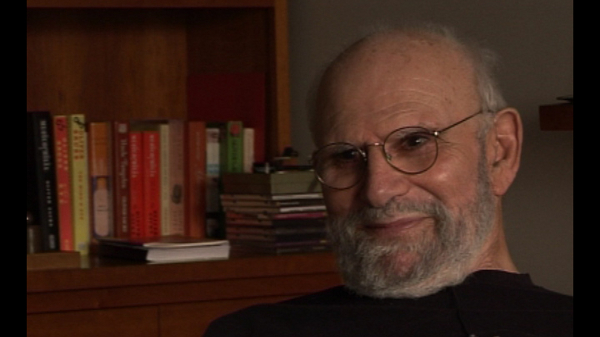NEXT STORY

Photography at UCLA
RELATED STORIES

NEXT STORY

Photography at UCLA
RELATED STORIES


|
Views | Duration | |
|---|---|---|---|
| 101. Difficulty with reading poetry | 1 | 412 | 01:18 |
| 102. Love of photography as a boy | 322 | 01:23 | |
| 103. Photography at UCLA | 301 | 02:19 | |
| 104. Photography in neurology | 299 | 01:19 | |
| 105. Photography, migraines and neurology | 305 | 01:13 | |
| 106. Did I really have that bad a time in Oxford and California? | 351 | 01:32 | |
| 107. My US motorbike travel journal | 345 | 00:23 | |
| 108. My travel journals and experiences | 366 | 02:00 | |
| 109. Seeing the Air Force Academy in Colorado Springs | 316 | 00:42 | |
| 110. Writing and weightlifting in California | 366 | 01:03 |


I had an ardent love of photography as a boy although it... it was sometimes rather specialised because I was interested in the processes of colour photography. And... and what it meant to have three negatives and to make positives from each of them and then superimpose these.
And the history of colour photography interested me, but also the history of stereo photography and also time-lapse photography. And I think this early interest in photography, for me, was partly a model of how the brain might deal with colour, whether instead of just getting it, it might be analysed as in colour photography. But also... I felt I did not have a good visual memory – I couldn’t hold images in my mind well. So, I wanted to make external images, which, of course, then one can share, share with other people.
Oliver Sacks (1933-2015) was born in England. Having obtained his medical degree at Oxford University, he moved to the USA. There he worked as a consultant neurologist at Beth Abraham Hospital where in 1966, he encountered a group of survivors of the global sleepy sickness of 1916-1927. Sacks treated these patients with the then-experimental drug L-Dopa producing astounding results which he described in his book Awakenings. Further cases of neurological disorders were described by Sacks with exceptional sympathy in another major book entitled The Man Who Mistook His Wife For A Hat which became an instant best seller on its publication in 1985. His other books drew on his rich experiences as a neurologist gleaned over almost five decades of professional practice. Sacks's work was recognized by prestigious institutions which awarded him numerous honours and prizes. These included the Lewis Thomas Prize given by Rockefeller University, which recognizes the scientist as poet. He was an honorary fellow of both the American Academy of Arts and Letters and the American Academy of Arts and Sciences, and held honorary degrees from many universities, including Oxford, the Karolinska Institute, Georgetown, Bard, Gallaudet, Tufts, and the Catholic University of Peru.
Title: Love of photography as a boy
Listeners: Kate Edgar
Kate Edgar, previously Managing Editor at the Summit Books division of Simon and Schuster, began working with Oliver Sacks in 1983. She has served as editor and researcher on all of his books, and has been closely involved with various films and adaptations based on his work. As friend, assistant, and collaborator, she has accompanied Dr Sacks on many adventures around the world, clinical and otherwise.
Tags: photography, colour, brain, vision
Duration: 1 minute, 23 seconds
Date story recorded: September 2011
Date story went live: 02 October 2012